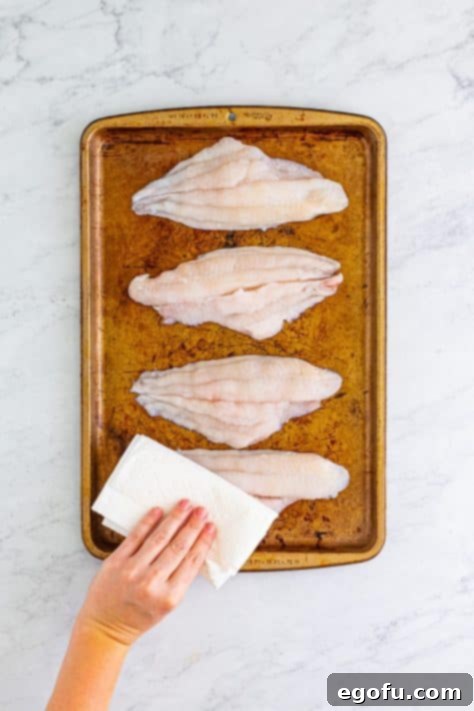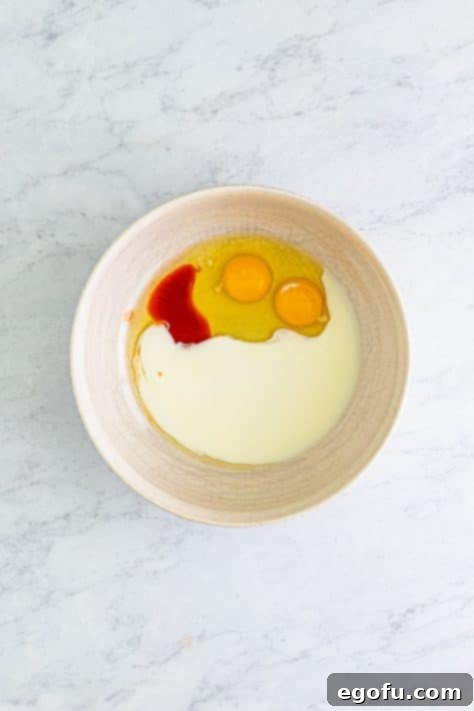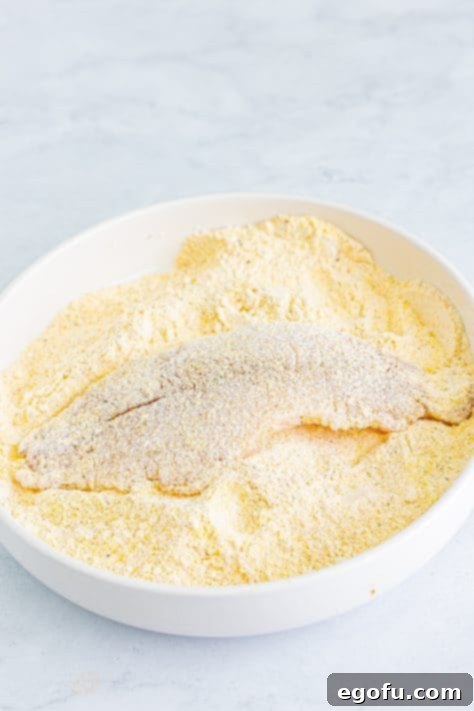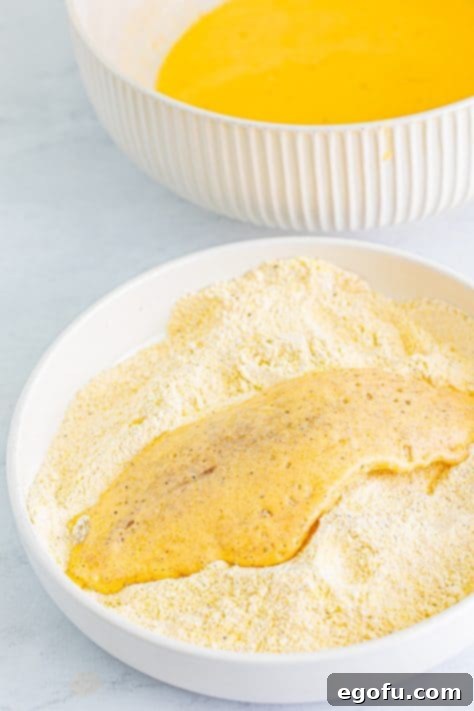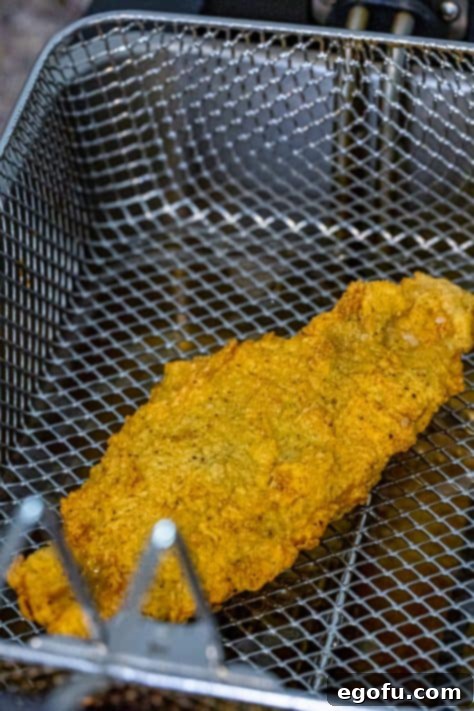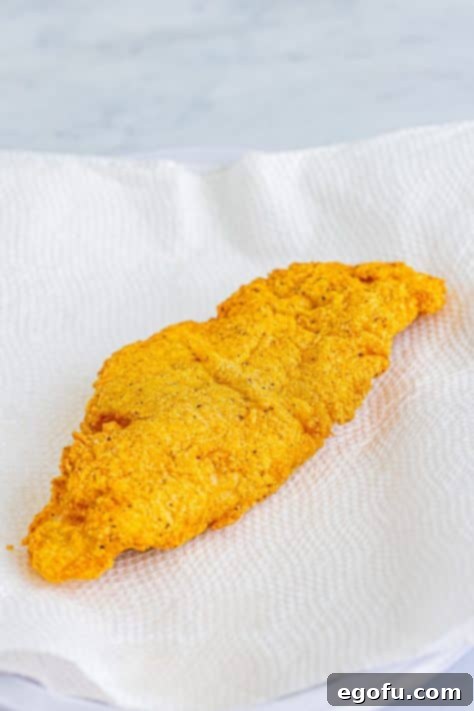Southern Fried Catfish: The Ultimate Crispy, Flavorful Delight
Craving that perfect, golden-brown, irresistibly crispy fried catfish? Look no further! This comprehensive guide and recipe will empower you to create a Southern classic that boasts a magnificent crunch and an explosion of flavor in every bite. Forget bland, soggy fish – this is the authentic experience, designed to deliver restaurant-quality results right in your own kitchen.
While often overlooked in some regions, catfish holds a revered status in Southern cuisine, celebrated for its unique mild flavor and meaty texture. This recipe elevates humble catfish fillets into a true delicacy, proving that simple ingredients, when combined with the right techniques and a robust seasoning blend, can yield truly extraordinary results. If you’ve ever yearned to replicate the mouthwatering fried catfish from your favorite Southern eateries, your search ends here!
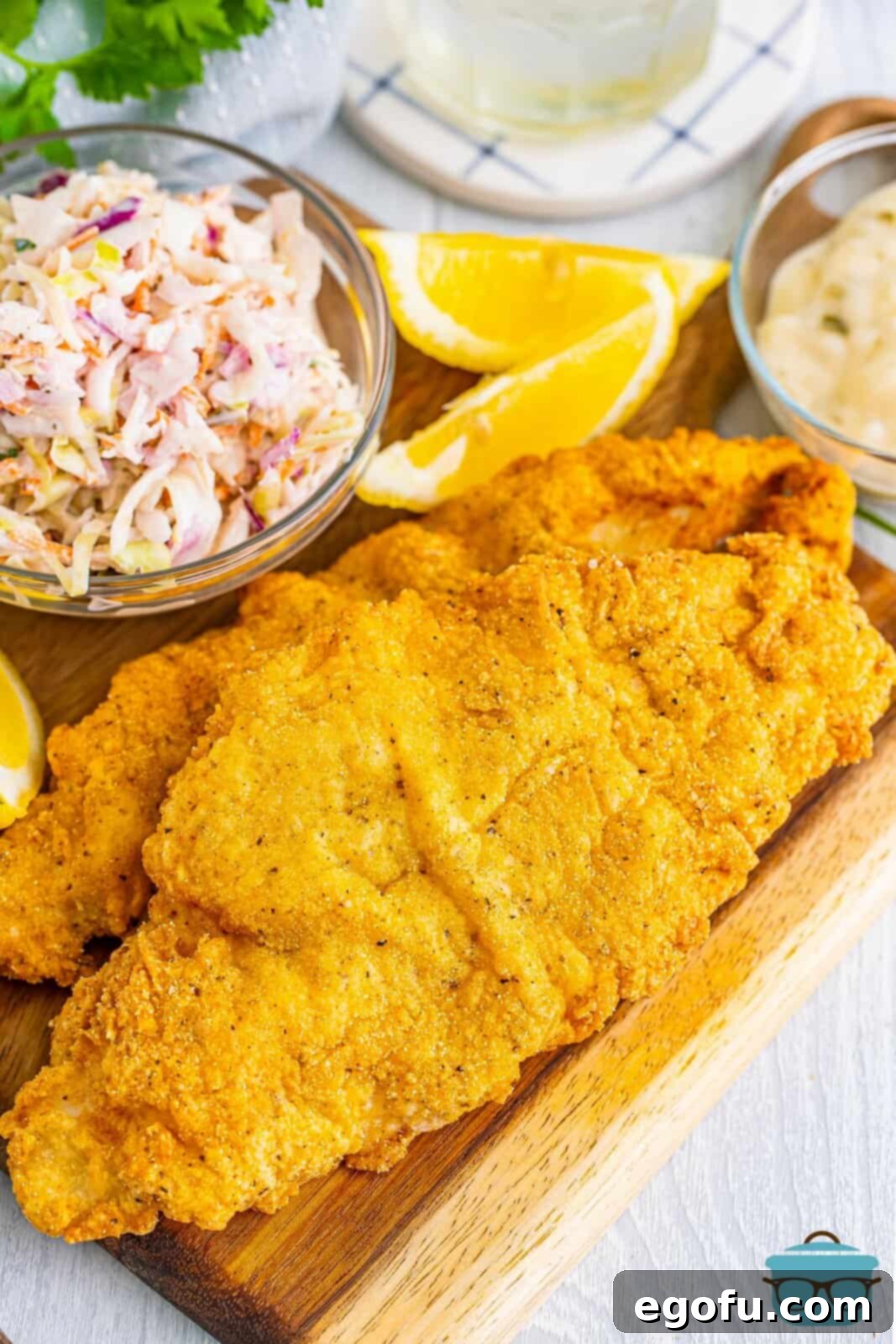
Frequently Asked Questions About Fried Catfish
Catfish boasts a distinctively mild, slightly sweet, and earthy flavor, often compared to the clean taste of cod or haddock, but with a firmer, meatier texture rather than the flaky consistency of other white fish. Its unique profile makes it incredibly versatile, absorbing seasonings and marinades beautifully. In the Southern United States, catfish is more than just a fish; it’s a culinary cornerstone, deeply embedded in local culture and traditions. Its prevalence in freshwater rivers and lakes made it an accessible and affordable protein source for generations, leading to its widespread popularity and countless beloved recipes. Southerners cherish it for its ability to transform into a crispy, flavorful dish, making it a staple for family dinners, fish fries, and celebrations alike.
While not strictly mandatory for a delicious outcome, soaking or brining catfish fillets can enhance their tenderness and often help to minimize any subtle “muddy” taste that some wild-caught catfish might have, though farm-raised varieties rarely present this issue. If you have the time and want to ensure the most tender results, a quick brine is recommended. Simply place the fillets in a bowl, cover them with cold water, and add about 1 tablespoon of salt per quart of water. Allow them to soak for 10-20 minutes. After soaking, be sure to pat the fish thoroughly dry before proceeding with the recipe. This step can make a noticeable difference in the texture and overall purity of flavor.
Frying catfish is remarkably fast, which is one of its many appeals! For average-sized fillets, you’ll typically need only about 3-4 minutes per side in hot oil. The key is to achieve that beautiful golden-brown crust and ensure the fish is cooked through, flaking easily with a fork. Over-frying is the most common mistake, as it can quickly lead to dry, less tender fish. Keep a close eye on your fillets and remove them as soon as they reach perfection. The internal temperature should reach 145°F (63°C) for food safety, though visually inspecting for golden color and flakiness is often sufficient for thin fillets.
Fried catfish is a versatile dish that pairs wonderfully with an array of classic Southern comfort foods. Some of the most popular and delightful accompaniments include creamy macaroni and cheese, a crisp and tangy coleslaw, fluffy hush puppies (a traditional fried cornmeal fritter), or even a basket of perfectly cooked sweet potato fries for a touch of sweetness. And, of course, no plate of fried catfish is complete without a generous dollop of zesty homemade tartar sauce for dipping, along with a few lemon wedges to squeeze over the fish for a bright, fresh finish. Other great options include grits, collard greens, or a simple green salad.
The most common culprit for breading not adhering to fish is excess moisture on the fillet. Before applying any coating, it is absolutely crucial to pat the catfish fillets thoroughly dry with paper towels. Any remaining surface moisture will prevent the flour and cornmeal mixture from forming a proper bond. Additionally, ensure your egg wash (the “glue” layer) is evenly applied, and that you gently press the breading onto the fish to create a solid coating. Avoid overcrowding the frying pan, as this can lower the oil temperature and lead to a less crispy, less adherent crust. Follow the dredging process precisely for the best adhesion.
Choosing the right oil is essential for achieving perfectly fried catfish. You need an oil with a high smoke point to prevent it from burning and imparting an off-flavor to your food. Peanut oil is a popular choice among many Southern cooks due to its neutral flavor and high smoke point, which allows it to get very hot without degrading. While peanut oil can be a bit pricier, it truly delivers exceptional results. More budget-friendly alternatives that also work very well include vegetable oil, canola oil, or even shortening like Crisco, or traditional lard for a rich, authentic taste. Avoid olive oil or butter, as their low smoke points will cause them to burn at the required frying temperatures.
Absolutely! The delicious cornmeal-based breading and frying technique outlined in this recipe are incredibly versatile and can be successfully applied to many other white fish varieties. If catfish isn’t your preference or isn’t readily available, excellent substitutions include cod, haddock, tilapia, or flounder. These fish share a similar mild flavor and tender flesh, making them ideal for frying with this crispy coating. Simply follow the same preparation steps, adjusting the frying time slightly if the fillets are significantly thicker or thinner than catfish.
To maintain freshness and food safety, any leftover fried catfish should be stored promptly. Allow the fish to cool completely to room temperature before transferring it to an airtight container. Refrigerate the container within two hours of cooking. Properly stored fried catfish will keep in the refrigerator for up to 3 days. While it won’t be as crispy as freshly fried, proper reheating techniques (as discussed below) can help restore some of its delightful texture.
Yes, cooked fried catfish freezes quite well, allowing you to enjoy this Southern delight at a later date. To freeze, ensure the fish is completely cooled. Place the fillets in a single layer on a baking sheet and freeze until solid (this prevents them from sticking together). Once frozen, transfer them to a freezer-safe bag or container, removing as much air as possible to prevent freezer burn. Frozen fried catfish can be stored for up to 3 months. Thaw overnight in the refrigerator before reheating for the best results.
While an air fryer can cook catfish, it’s important to manage expectations regarding the texture and flavor. An air fryer will yield a delicious and much healthier version, but it won’t perfectly replicate the deep-fried crispiness and richness that comes from frying in oil. However, it’s a fantastic alternative! To air fry, prepare the catfish fillets as directed in the recipe below for breading. Then, preheat your air fryer to 400°F (200°C). Working in batches to avoid overcrowding (which can lead to steaming rather than crisping), lightly spray the air fryer basket and the coated fish with cooking spray. Cook for approximately 8-10 minutes per side, or until golden brown and cooked through, flipping halfway. This method still provides a wonderfully crunchy exterior and tender interior, albeit with a slightly different character than traditional deep-frying.
Reheating fried catfish without it becoming soggy is key to enjoying leftovers. The microwave is generally not recommended as it steams the fish. For the best crispiness, use your oven or an air fryer. To reheat in the oven, preheat it to 350°F (175°C). Place the leftover catfish fillets on a wire rack set over a baking sheet (this allows air to circulate, preventing sogginess). Bake for 10-15 minutes, or until heated through and crispy. In an air fryer, preheat to 375°F (190°C) and cook for 5-7 minutes, flipping once, until hot and crisp. A quick dip back in hot oil for 1-2 minutes is also an option for ultimate crispness, if you don’t mind the extra oil.

Essential Ingredients for Unforgettable Fried Catfish
Achieving the perfect fried catfish doesn’t require an extensive list of obscure ingredients. Instead, it relies on a thoughtful combination of pantry staples and a few Southern-inspired flavor enhancers. Here’s a closer look at what you’ll need and why each component is vital for creating layers of deliciousness:
- Catfish Fillets: The star of our show! Choose fresh or thawed fillets, ideally about 1/2 to 3/4 inch thick for even cooking. If catfish isn’t your preference or readily available, firm white fish like haddock, cod, or tilapia make excellent substitutes, offering a similar mild flavor and texture that fries beautifully.
- Old Bay Seasoning: A true game-changer for seafood! This iconic blend of herbs and spices is a staple in many Southern kitchens for good reason. Its complex, savory, and slightly peppery notes complement the catfish perfectly, providing a foundational layer of classic seafood flavor. Don’t skip it if you want that authentic taste!
- Garlic Powder, Onion Powder, Salt, and Black Pepper: These fundamental seasonings are essential for building robust flavor. Catfish, with its mild taste, truly benefits from generous seasoning. We’ll use these to season the fish directly and also incorporate them into the breading mixture, ensuring flavor permeates every layer. Feel free to adjust quantities to your personal taste, or experiment with other favorite spices like cayenne for a little kick, or paprika for color and a subtle smokiness.
- All-Purpose Flour: This forms the base of our crispy coating. Its fine texture helps create an even crust. While all-purpose is ideal, self-rising flour can be used in a pinch, but be aware it contains baking powder, which will make the coating puff up slightly more. Ensure your flour is fresh for optimal results.
- Yellow Cornmeal: The secret to that signature Southern crunch! Yellow cornmeal is traditionally used for its slightly coarser texture and golden hue, which fries up beautifully. While white cornmeal can be used as an alternative, yellow is preferred for authenticity. Crucially, make sure it’s plain cornmeal, not self-rising. If you’re out of cornmeal, unseasoned breadcrumbs could work for a different, but still crispy, texture.
- Large Eggs: Eggs act as the critical binding agent in our breading process. Whisked into an egg wash, they create a sticky surface that allows the flour and cornmeal mixture to adhere firmly to the fish fillets, preventing the breading from falling off during frying. This ensures a consistent, crunchy coating.
- Buttermilk: A quintessential Southern ingredient, buttermilk is the classic choice for preparing fried fish and chicken. It not only tenderizes the fish slightly but also adds a subtle tangy flavor and contributes a desirable richness to the egg wash. The acidity in buttermilk helps to break down proteins, making the fish incredibly moist and flavorful. While regular milk can be used if absolutely necessary, the unique tang and tenderizing properties of buttermilk truly make a difference in the final product.
- Hot Sauce: Don’t let the name deter you! A tablespoon of hot sauce in the egg wash adds a depth of flavor and a very subtle hint of warmth, rather than overwhelming spice. It’s a common practice in Southern cooking, adding another layer of complexity that makes the catfish truly shine. Most of the heat cooks off, leaving behind a nuanced, savory note. If you’re extremely sensitive to spice, you can omit it, but it’s highly recommended for an authentic flavor profile.
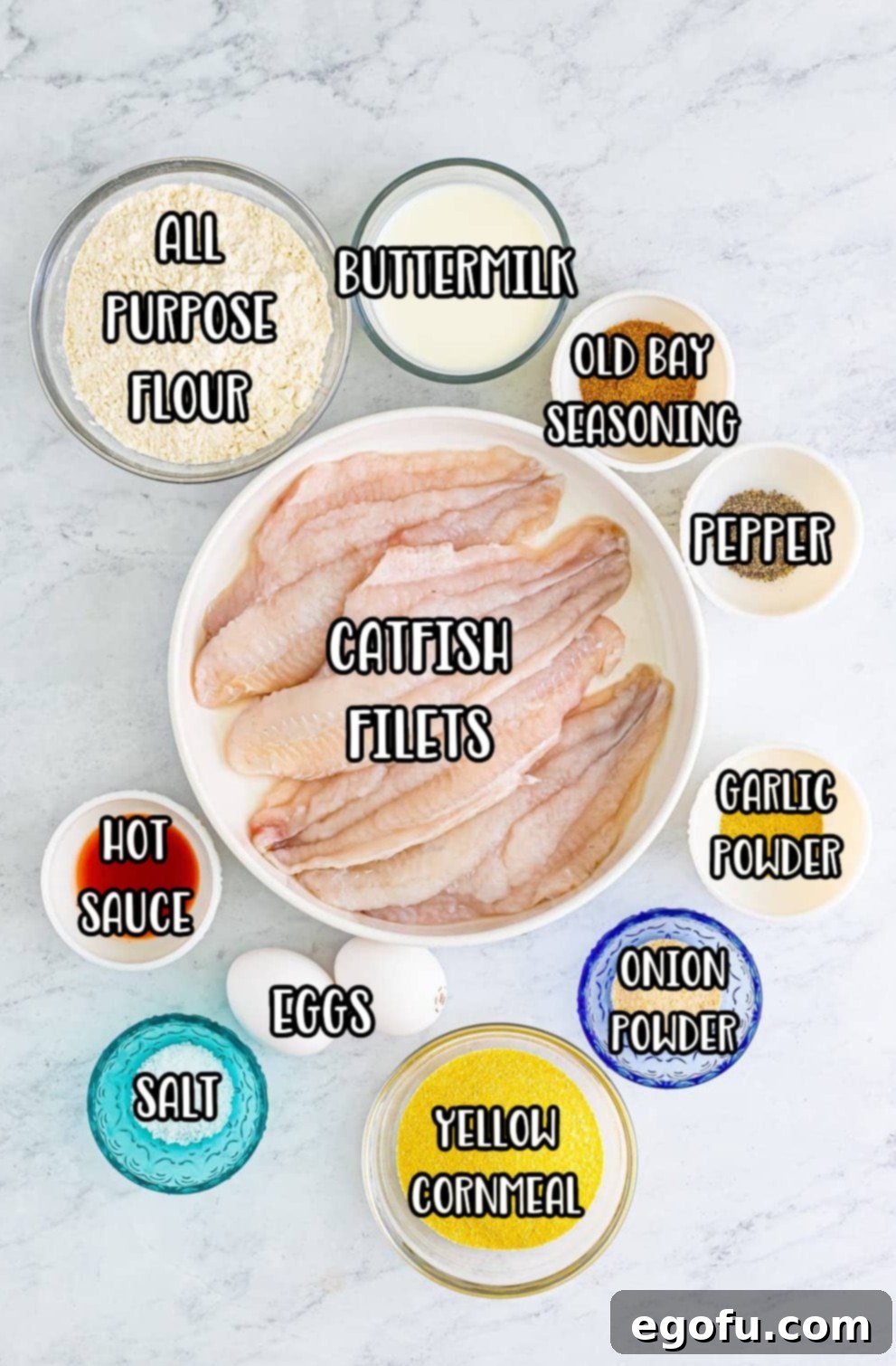
How to Master Crispy Southern Fried Catfish: Step-by-Step Instructions
Follow these detailed steps to achieve perfectly crispy, flavorful fried catfish every time. Preparation is key, so make sure all your ingredients are ready before you begin.
- **Prepare Your Frying Station:** Begin by preheating your deep fryer to a steady 350°F (175°C). If you don’t have a deep fryer, a large, heavy-bottomed pot or Dutch oven filled with about 4 inches of high smoke point vegetable oil (like peanut, canola, or vegetable oil) will work perfectly. Use a reliable thermometer to monitor the oil temperature, as maintaining the correct heat is crucial for crispiness and preventing soggy or burnt fish.
- **Prepare the Catfish Fillets:** Gently pat the catfish fillets thoroughly dry on both sides using paper towels. This is a critical step that ensures the breading adheres properly and achieves maximum crispiness. Set the dry fillets aside while you prepare the seasonings.
- **Create the Spice Blend:** In a small bowl, combine the garlic powder, onion powder, kosher salt, and black pepper. Stir them together until well mixed. This blend will infuse your catfish with a rich, savory foundation.

- **Season the Fish:** Generously season both sides of each catfish fillet with the prepared spice mix. Don’t be shy – this is where a significant amount of flavor comes from! Ensure an even coating. Any leftover spice mix should be reserved for the next step.
- **Prepare the Dry Breading Mixture:** In a large, shallow bowl (wide enough to accommodate a fillet), combine the all-purpose flour, yellow cornmeal, and any remaining spice mix. Whisk these dry ingredients together until they are uniformly blended. This is your primary breading layer that will give the catfish its characteristic crunch.
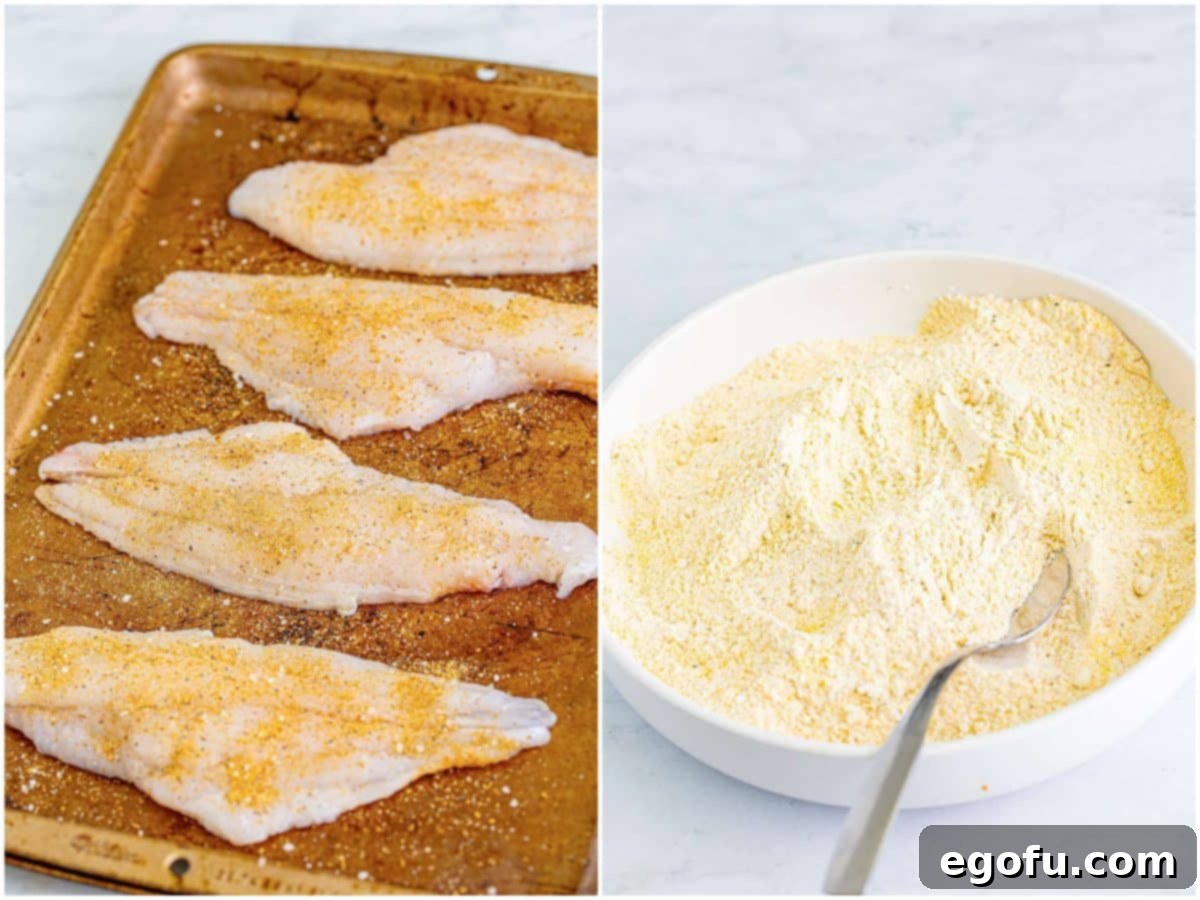
- **Prepare the Wet Dredging Mixture:** In another large, shallow bowl, whisk together the large eggs, buttermilk, and hot sauce. Beat until the mixture is well combined and slightly frothy. This egg wash acts as the “glue” that helps the dry breading adhere to the fish.

- **The Double-Dredge Process (First Pass):** Take one seasoned fish fillet and thoroughly dredge it in the flour and cornmeal mixture, ensuring it’s completely coated on all sides. Gently shake off any excess dry mixture. This initial coating creates a porous surface for the egg wash.
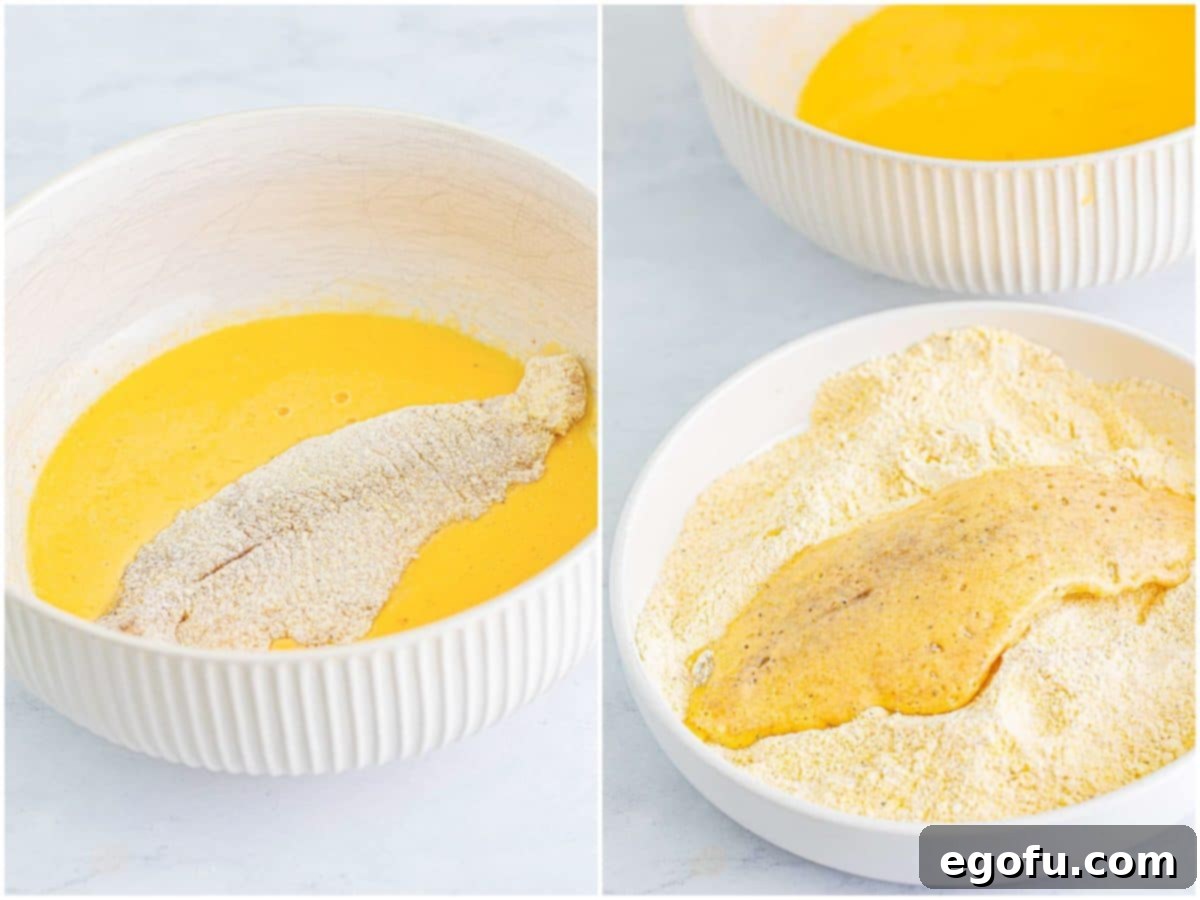
- **The Double-Dredge Process (Second Pass – Wet):** Next, dip the flour-coated fillet into the egg and buttermilk mixture, ensuring it’s fully coated. Allow any excess liquid to drip off back into the bowl. This wet layer will help the final dry coating stick firmly.
- **The Double-Dredge Process (Third Pass – Dry):** Immediately return the egg-dipped fillet to the flour and cornmeal mixture. Press the breading gently onto the fish to ensure a thick, even coating. Shake off any loose excess. This double-dredging technique is key to achieving that incredibly crispy, crunchy crust. Place the fully coated fillet on a clean sheet tray. Repeat this breading process for all remaining fish fillets, ensuring they are ready for frying.
- **Frying the Catfish:** Once your oil has reached the target temperature of 350°F (175°C), carefully and gently add one or two breaded fish fillets to the hot oil at a time, ensuring you do not overcrowd the fryer. Overcrowding will lower the oil temperature, leading to soggy fish. Fry each fillet for approximately 3-4 minutes, or until it turns a beautiful golden brown and is cooked through. You may need to gently flip the fillet halfway through cooking for even browning. The fish should be flaky when pierced with a fork.

- **Drain and Keep Crispy:** As each fillet finishes frying, carefully remove it from the oil and immediately place it on a paper towel-lined plate to absorb any excess oil. To maintain maximum crispiness while you fry the remaining batches, transfer the drained fish to a wire rack set over a clean baking sheet. The wire rack allows air to circulate around the fillets, preventing them from steaming and becoming soggy.
- **Serve and Enjoy:** Continue frying the remaining fish fillets in batches. Once all the catfish is fried to golden perfection, serve immediately with fresh lemon wedges and your favorite homemade tartar sauce. This crispy, flavorful Southern Fried Catfish is best enjoyed hot and fresh!
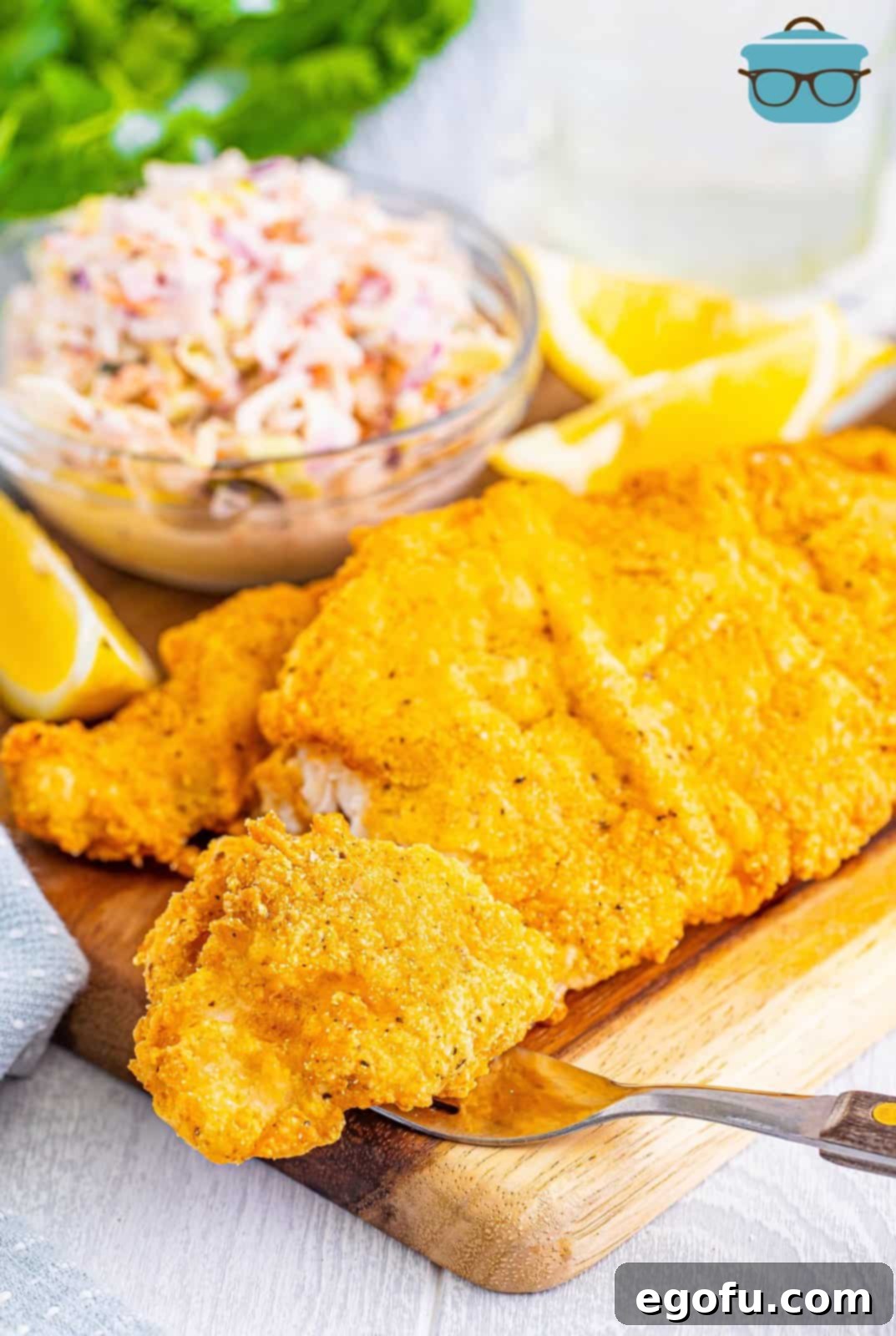
Craving More Southern Comfort? Explore These Delicious Recipes!
- Air Fryer Homemade Fish Sticks
- Southern Black Eyed Peas
- The Best Air Fryer Salmon
- Shrimp Po Boys
- Perfect Smoked Salmon
- Chicken Étouffée
- Red Beans and Rice
- Country Fried Pork Chops and Gravy
- Bacon Cornbread
- Chicken Fried Chicken
- Southern Fried Potatoes
Originally published: May 2023
Republished: March 2025

Fried Catfish
Print
Pin
Rate
Ingredients
- 2 pounds catfish fillets
- 2 teaspoons Old Bay seasoning
- 1 teaspoon garlic powder
- 1 teaspoon onion powder
- 1 teaspoon kosher salt
- 1 teaspoon black pepper
- 1 cup all-purpose flour
- ½ cup yellow cornmeal
- 2 large eggs
- ½ cup buttermilk
- 1 Tablespoon hot sauce
- lemon wedges and tartar sauce for serving (optional)
Instructions
- Preheat a deep fryer or a large pot with 4 inches of vegetable oil up the sides to 350°F.
- Pat 2 pounds catfish fillets with paper towels and set them aside.

- In a small bowl, stir together 2 teaspoons Old Bay seasoning, 1 teaspoon garlic powder, 1 teaspoon onion powder, 1 teaspoon kosher salt and 1 teaspoon black pepper. Season the fish on both sides with the spice mix (you’ll use any leftover spices in the next step.)

- In a large shallow bowl, stir together 1 cup all-purpose flour, 1/2 cup yellow cornmeal and the leftover spice mix.

- In another large shallow bowl, whisk together 2 large eggs, 1/2 cup buttermilk and 1 Tablespoon hot sauce.

- One at a time, dip a fish fillet into the flour mixture and coat the fish in the mixture. Shake off any excess.

- Dip the fish fillet into the egg mixture until coated and let any excess drip off.

- Dip the fish fillet back into the flour mixture and coat it well. Shake off any excess and place it on a sheet tray. Repeat with the remaining fish fillets.

- When ready to fry, gently add one fish fillet at a time to the fryer and fry for about 3-4 minutes until golden brown and cooked through. Flip the fillet if needed.

- Place the fried fish fillets on a paper towel-lined plate to soak up any excess oil, and then place them on a sheet tray with a wire rack on top. This will help keep the fish crispy.

- Repeat with the remaining fish fillets and serve with lemon wedges and tartar sauce.

Notes
- Please refer to my FAQ’s and ingredient list above for other substitutions or for the answers to the most common questions.
- Catfish can burn in the fryer easily, so don’t walk away from the fryer.
- If you find that the breading isn’t sticking to your fillets, it’s most often because you didn’t properly dry them off. Don’t skip this!
- Seasoning the fish first really brings a yummy flavor, don’t skip this either.
- You can use whatever frying oil you have on hand, as long as it has a high smoke point. I like peanut oil, but other high smoke point oil will work just fine.
- You can use this recipe to bread and fry other fish as well.
- Store leftovers in the fridge for up to 3 days. Reheat in the oven or air fryer.
- You can freeze leftovers, if stored properly, for up to 3 months.
Nutrition
Nutritional Disclaimer
“The Country Cook” is not a dietician or nutritionist, and any nutritional information shared is an estimate. If calorie count and other nutritional values are important to you, we recommend running the ingredients through whichever online nutritional calculator you prefer. Calories and other nutritional values can vary quite a bit depending on which brands were used.

